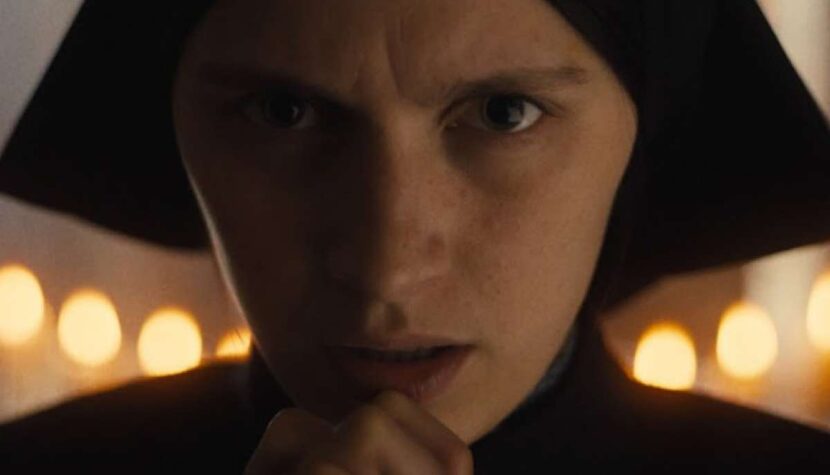THE FIRST OMEN. Frenzy, Whisper, and Shock [REVIEW]

Everyone knows that the Antichrist will come into the world on June 6th. It’s so obvious that we always look at that date on the calendar with a certain reservation. With so many places on Earth, but Rome seems to be the appropriate birthplace. After all, it’s darkest under the lamppost. Moreover, led by the sisters of the female orphanage. Here, there are chapels and altars to offer prayers to the Savior. Here and there, there are “bad rooms” for unruly girls. At first glance, a sanctuary, but underneath, a psychiatric institution. Extraordinary circumstances for another generic satanic horror. Add to that the specter of legendary Omen by Richard Donner, to which The First Omen adds an expanded prologue. No one asked for it, and sequels/prequels/remakes of horror classics are rather treacherous ground. Creative invention is usually overridden by marketing calculation, with storytelling needs taking a back seat. The First Omen was not supposed to succeed so much. Yet, it turns out to be a very positive surprise in the end.
Arkasha Stevenson’s film is not a homage to the original, but it certainly brings out its visual trademarks. Something unfortunate can always fall from the sky onto passersby’s heads. Especially when someone knows a bit too much. Deadly accidents are demons’ specialty. Margaret (Nell Tiger Free), arriving in the Italian capital for the ceremony of consecration, feels from the beginning that the orphanage harbors many secrets. You can still overlook one eerie child’s drawing on the hallway chalkboard. A drastic self-immolation of a nun is already a serious warning signal. Margaret also has certain perception problems, carrying a heavy baggage of childhood memories, and her vivid imagination often deconstructs the actual course of events. A true dream and a falsified reality. The creators deftly and skillfully navigate between these two orders.

The First Omen will not be renowned for providing an answer to the question, “How was the Antichrist Damien born?” – but certainly thanks to exceptionally creative and surprising technical execution. The main hero of the film is undoubtedly its cinematographer Aarton Morton. It’s unlikely to happen, but he did a job worthy of an Oscar nomination. Tense camera movements, mirror manipulations, swirling rotations around its axis, extracting details and bird’s-eye views, heralding compositional threat or seemingly innocent shots creating a sense of being tracked and observed. Morton has an idea and an unconventional solution for every scene. They consistently elevate Omen: The Beginning beyond the bounds of a conventional horror film, imbuing it with unexpected aesthetics and an arthouse character (associations with Polanski or Roeg will be particularly apt). It may sound like tired genre gimmicks, but believe (in God?), the new Omen has undeniable stylistic freshness. Creative editing also comes to its support, extracting and adding additional meanings, intensifying the fatalistic mood, and compelling the viewer’s attention.
Arkasha Stevenson in The First Omen tells of pivotal moments. In private, social, and religious optics. Margaret bids farewell to civilian life and enters the convent, as further manifestations and escalating protests pass through Roman streets, a schism occurs in the church hierarchy, and in a few days, the Antichrist will be conceived. End times indeed. Despite the accumulation of tensions, Omen: The Beginning maintains a slow pace and enjoys silence; it’s more a film that exudes an atmosphere of horror and distrust, suggesting that evil lurks around the corner, rarely indulging in supernatural jump scares. The creators are well aware that they have achieved something decidedly more than just a tribute to the legendary Omen. In this context, the door for continuation seems quite understandable.

